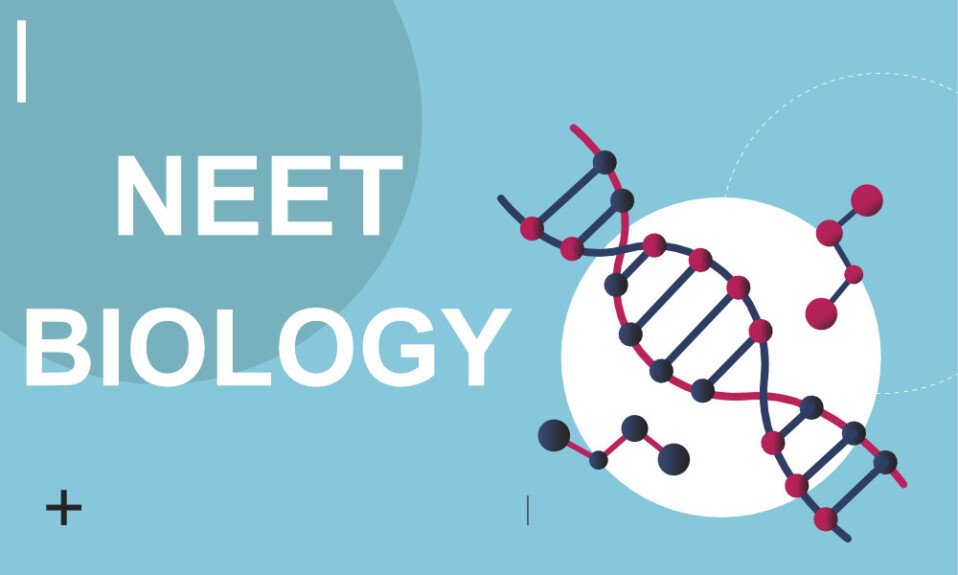1. Food poisoning is caused by
a. Clostridium tetani
b. Clostridium Welchii
c. Diphtheria
d. Clostridium botulinum
Answer:d. Clostridium botulinum
2. Koplic’s spots will develop in
a. HIV
b. Measles
c. Mumps
d. Rubella
Answer:b. Measles
3. Viral DNA is resistant to DNA of the host cell because it contains
a. 5’-HMC
b. 5’-HMA
c. 5’-CHM
d. 5’MHC
Answer:a. 5’-HMC
4. Which of the following is an example of live vaccine?
a. Pertussis
b. Mumps
c. cholera
d. rabies
Answer:c. cholera
5. Triple toxoid vaccine gives protection against
a. Diphtheria, tetanus and rabies
b. Tetanus, whooping cough, Tuberculosis
c. Whooping cough, tetanus and Diphtheria
d. Whooping cough, cancer and T.B.
Answer:c. Whooping cough, tetanus and Diphtheria
6. Higher dose of chloramphenicol affects the eukaryotic cells because
a. They have 30 S ribosomes
b. They have mitochondria
c. They have 70 S ribosomes
d. None of the above
Answer:b. They have mitochondria
7. AIDS is caused by
a. Retrovirus
b. Prion
c. Rhabdovirus
d. Retroprison
Answer:a. Retrovirus
8. Penicillin is a
a. Primary metabolite
b. Secondary metabolite
c. Tertiary metabolite
d. None of the above
Answer:b. Secondary metabolite
9. The rejection of an organ transplant such as a kidney transplant, is an example of _____ Hypersensitivity.
a. Immediate
b. Delayed
c. Allergy
d. None of these
Answer:a. Immediate
10. Listeriosis was ______ disease.
a. Food borne
b. Water borne
c. Milk borne
d. Air borne
Answer:a. Food borne
11. Pus-forming forms are called as
a. Pyoderm
b. Pyogenic
c. Pyrogen
d. None of the above
Answer:b. Pyogenic
12. In Elisa technique, the antibodies are labeled by
a. Acridine orange
b. Alkaline phosphatase
c. Neutral red
d. Bromothymol blue
Answer:b. Alkaline phosphatase
13. _____ is a genetic disease characterized by a total or partial inability to synthesize globulins.
a. Apitososis
b. Agammaglobulinemia
c. Gammaglobulinemia
d. Sickle-cell anemia.
Answer:b. Agammaglobulinemia
14. A study involving analysis of risk for genetic defects in a family is
a. Genetic Engineering
b. Genetic counseling
c. Genetic drift
d. Genetic equilibrium
Answer:d. Genetic equilibrium
15. Viral antigens are likely
a. Proteins
b. Glycoproteins
c. Lipo proteins
d. Both a and b
Answer:d. Both a and b
16. The suitable assay method for antibiotics is
a. Enzymatic assay
b. Turbidimetric assay
c. End point determination assay
d. Metabolic assay
Answer:c. End point determination assay
17. ELISA test is used for the identification of
a. Jaundice
b. AIDS
c. Cancer
d. Diabetes
Answer:b. AIDS
18. Incubation period for infective Hepatitis disease
a. 45 – 80 days
b. 15 – 35 days
c. 35 – 50 days
d. 5 – 15 days
Answer:d. 5 – 15 days
19. All of the following are bacteriostatic chemotherapeutic agents except
a. Bacitracin
b. Chloramphenicol
c. Novobiocin
d. Tetracycline
Answer:a. Bacitracin
20. Kinetosomes are observed in
a. Algae
b. Fungi
c. Protozoa
d. Viruses
Answer:c. Protozoa
21. β-lactam ring is present in
a. Erythromycin
b. Penicillin
c. Tetracycline
d. Chloramphenicol
Answer:b. Penicillin
22. Antibiotics produced from streptomyces orientalis is
a. Streptomycin
b. Penicillin
c. Vancomycin
d. Both a and b
Answer:c. Vancomycin
23. The drug of choice for dermal, oral and vaginal candidiasis is
a. Griseofulvin
b. Amphotericin B
c. Gentian violet
d. Nystatin
Answer:d. Nystatin
24. Botulism means
a. Food adulteration
b. Food poisoning by streptococcus bacteria
c. Chemical contamination of food
d. Food processing
Answer:c. Chemical contamination of food
25. Chloramphenicol is obtained from
a. Streptomyces griseus
b. Streptomyces venezuelae
c. Streptomyces pyogenes
d. None of these
Answer:b. Streptomyces venezuelae
26. Streptomycin is obtained from
a. Streptococcus species
b. Streptomyces griseus
c. Staphylococcus aureus
d. None of these
Answer:a. Streptococcus species
27. The treatment required for small bodies of water is
a. Disinfection
b. Filtration
c. Purification
d. All of these
Answer:d. All of these
28. Surface ropiness is caused by
a. Alcaligenes viscolactis
b. Streptococcus
c. both a and b
d. None of these
Answer:d. None of these
29. Septicaemia is
a. Bacteria in blood
b. Toxin in blood
c. Pus in blood
d. Multiplication of bacteria and toxins in blood
Answer:d. Multiplication of bacteria and toxins in blood
30. In AIDS, Kaposi’s sarcoma may respond to
a. Interleukin – 2 infusion
b. Azathioprine
c. Alpha interferon
d. None of these
Answer:c. Alpha interferon
31. Ciprofloxacin acts by inhibiting
a. Cell Wall synthesis
b. RNA synthesis
c. Folate synthesis
d. DNA gyrase
Answer:d. DNA gyrase
32. Lyme disease is caused by
a. Bacteria
b. Fungi
c. Spirochaete
d. Virus
Answer:c. Spirochaete
33. Toxic shock syndrome is caused by
a. Staph. albus
b. Staph. aureus
c. Strep. viridana
d. None of these
Answer:b. Staph. aureus
34. Black water fever is caused by
a. P. vivax
b. P. falciparum
c. P. ovale
d. None of these
Answer:b. P. falciparum
35. Mantoux test detects
a. M. tuberculosis
b. Cyanobacteria
c. Clostridia
d. Both a and b
Answer:a. M. tuberculosis
36. The antibiotic acting on cell wall is
a. Bacitracin
b. Penicillin
c. Cyclosporine
d. All of these
Answer:d. All of these
37. Aflatoxin is produced by
a. Aspergillus sps
b. Penicillium sps
c. Alternaria sps
d. None of these
Answer:a. Aspergillus sps
38. Penicillin is discovered by
a. Fleming
b. Pasteur
c. Koch
d. None of these
Answer:a. Fleming
39. Antibiotics used in combination may demonstrate
a. Synergism
b. Antagonism
c. both
d. None of these
Answer:c. both
40. The drug of choice in anaphylactic shock is
a. Histamine
b. Corticosteroid
c. Epinephrine
d. None of these
Answer:c. Epinephrine
41. Drugs of choice for treatment of Mycoplasma infections:
a. Tetracyclines
b. Erythromycin
c. a and b
d. Penicillins
Answer:c. a and b
42. A number of viruses are known to infect mycoplasmas, called
a. Bacteriophages
b. Mycoplasma phages
c. Virions
d. Tiny strains
Answer:b. Mycoplasma phages
43. The following are true about Rickettsiae.
a. Unicellular organisms
b. Prokaryotic intracellular parasites
c. Presence of 70 S ribosomes
d. It causes hemolysis in human beings
e. Gram negative pleomorphic rods
Answer:d. It causes hemolysis in human beings
44. The causative agent of scrub typhus:
a. R.Quintana
b. R.rickettsii
c. R.orientalis
d. R.prowazekii
Answer:c. R.orientalis
45. Lymphogranuloma venerum (LGV) is a sexually transmitted disease caused by
a. Ophthalmia
b. C.trachomatis
c. C.pneumonias
d. C.psittaci
Answer:b. C.trachomatis
46. Intradermal test employed for diagnosis of LGV is
a. Frei test
b. Mantoux test
c. Schick test
d. Dick test
Answer:a. Frei test
47. Which algae are pathogenic to humans?
a. Cephaleuros
b. Ulothrix
c. Macrocystis
d. Prototheca
Answer:d. Prototheca
48. Erythromycin is obtained from
a. S.griseus
b. S.rimosus
c. S.scabies
d. S.erythraeus
Answer:d. S.erythraeus
49. Common cold is caused by
a. Adenovirus
b. Coronavirus
c. Hepatitis virus
d. Pox virus
Answer:b. Coronavirus
50. The causative agent of conjunctivitis:
a. Adenovirus
b. Coronavirus
c. Paramyxovirus
d. None of these
Answer:a. Adenovirus



